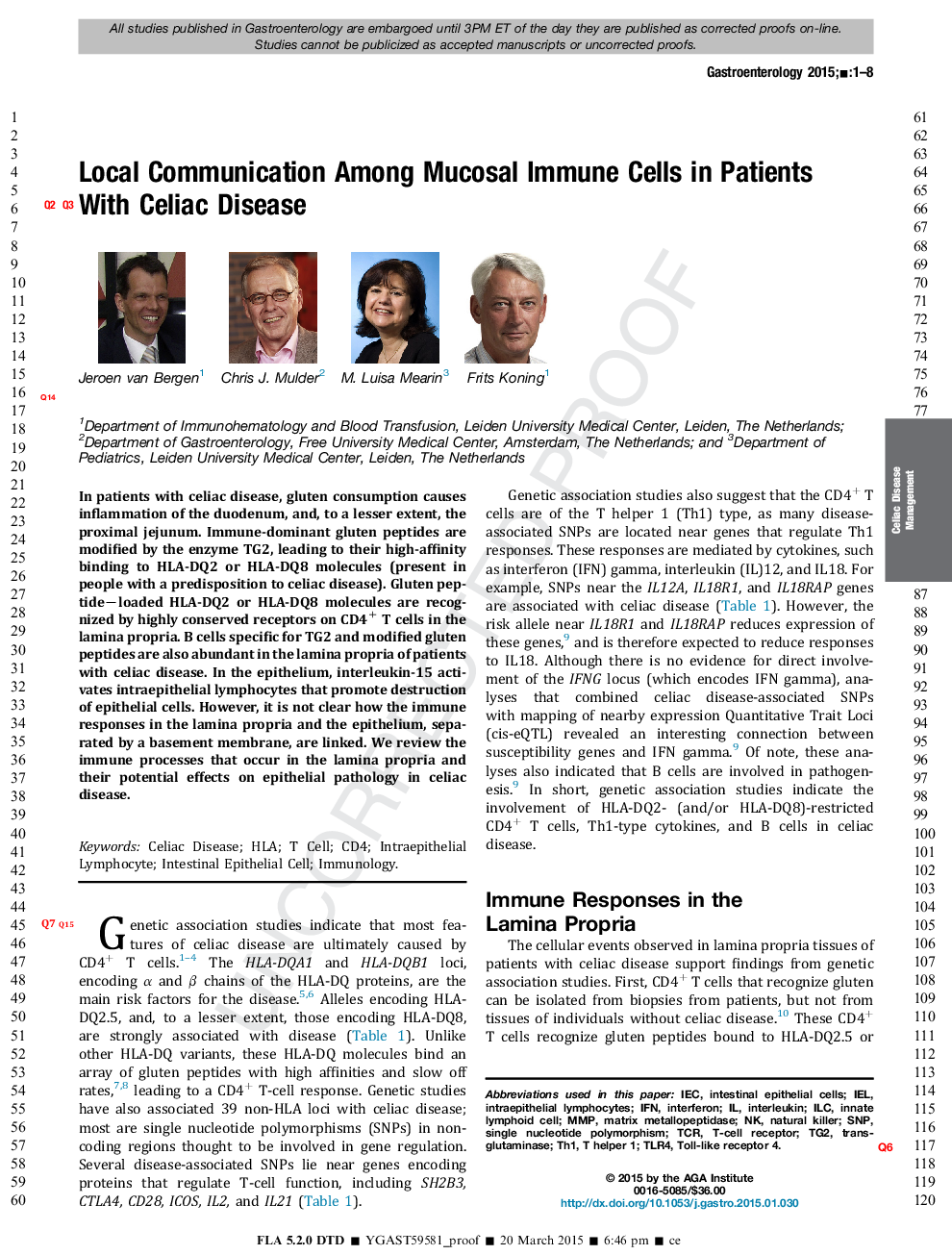| Article ID | Journal | Published Year | Pages | File Type |
|---|---|---|---|---|
| 6093662 | Gastroenterology | 2015 | 8 Pages |
Abstract
In patients with celiac disease, gluten consumption causes inflammation of the duodenum, and, to a lesser extent, the proximal jejunum. Immune-dominant gluten peptides are modified by the enzyme TG2, leading to their high-affinity binding to HLA-DQ2 or HLA-DQ8 molecules, present in people with a predisposition to celiac disease. Gluten peptideâloaded HLA-DQ2 or HLA-DQ8 molecules are recognized by highly conserved receptors on CD4+ T cells in the lamina propria. B cells specific for TG2 and modified gluten peptides are also abundant in the lamina propria of patients with celiac disease. In the epithelium, interleukin-15 activates intraepithelial lymphocytes that promote destruction of epithelial cells. However, it is not clear how the immune responses in the lamina propria and the epithelium, separated by a basement membrane, are linked. We review the immune processes that occur in the lamina propria and their potential effects on epithelial pathology in celiac disease.
Keywords
T helper 1MMPTh1IELTG2TCrCD4TLR4ILCnatural killerHLAImmunologyinterferonIFNinterleukinCeliac diseaseTransglutaminaseT cellinnate lymphoid cellintestinal epithelial cellIntestinal epithelial cellsIntraepithelial lymphocyteintraepithelial lymphocytesmatrix metallopeptidaseSingle nucleotide polymorphismSNPIECToll-like receptor 4T-cell receptor
Related Topics
Health Sciences
Medicine and Dentistry
Gastroenterology
Authors
Jeroen van Bergen, Chris J. Mulder, M. Luisa Mearin, Frits Koning,
